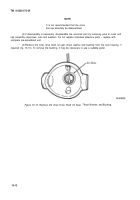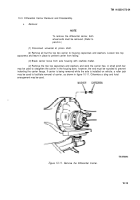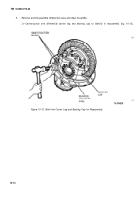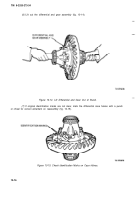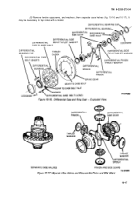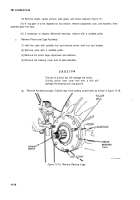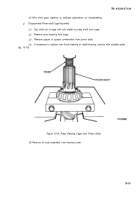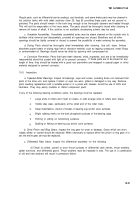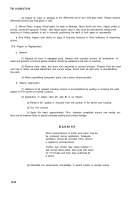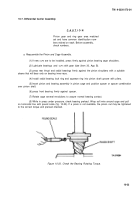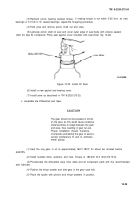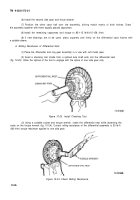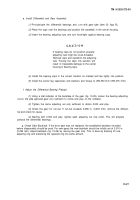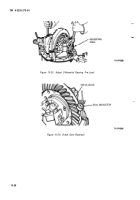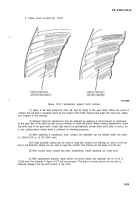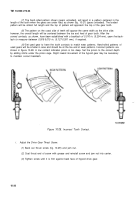TM-9-2320-273-34 - Page 429 of 801
TM 9-23202-27-34
Rough parts, such as differential carrier castings, cast brackets, and some brake parts may be cleaned in
hot solution tanks with mild alkali solutions (item 25, App B) providing these parts are not ground or
polished. The parts should remain in the tank long enough to be thoroughly cleaned and heated through.
This will aid the evaporation of the rinse water. The parts should be thoroughly rinsed after cleaning to
remove all traces of alkali. If this solution is not available, drycleaning solvent may be used.
c. Complete Assemblies.
Completely assembled axles may be steam cleaned on the outside only to
facilitate initial removal and disassembly, provided all openings are closed. Breathers and all other
openings should be tightly covered or closed to prevent the possibility of water entering the assembly.
d. Drying.
Parts should be thoroughly dried immediately after cleaning. Use soft, clean, Iintless
absorbent paper towels or wiping rags free of abrasive material, such as lapping compound, metal filings
or contaminated oil. Bearings should never be dried by spinning with compressed air.
e. Corrosion Prevention.
Parts that have been cleaned, dried, inspected, and are to be immediately
reassembled should be coated with light oil to prevent corrosion.
If these parts are to be stored for any
length of time, they should be treated with a good rust preventive and wrapped in special paper or other
material designed to prevent corrosion.
10-5. Inspection.
a. Tapered Roller Bearings.
Inspect all bearings, cups and cones, including those not removed from
parts of the drive unit, and replace if rollers or cups are worn, pitted or damaged in any way. Remove
parts needing replacement with a suitable puller or in a press with sleeves. Avoid the use of drifts and
hammers. They may easily mutilate or distort component parts.
If any of the following bearing conditions exists, the bearings must be replaced:
1.
Large ends of rollers worn flush to recess, or radii at large ends of rollers worn sharp.
2.
Visible step wear, particularly at the small end of the roller track.
3.
Deep indentations, cracks or breaks in bearing cup and/or cone surfaces.
4.
Bright rubbing marks on the dark phosphate surfaces of the bearing cage.
5.
Etching or pitting on functioning surfaces.
6.
Spalling or flaking on bearing cup and/or cone surfaces.
b. Drive Pinion and Ring Gears. Inspect
the ring gear for wear or damage. Gears which are worn,
ridged, pitted, or scored should be replaced. When necessary to replace either the pinion or ring gear of a
set, the entire gear set must be replaced.
c. Differential Nest Gears.
Inspect the differential assembly for the following.
(1)
Check for pitted, scored or worn thrust surfaces of differential case halves, thrust washers,
spider trunnions, and differential gears. Thrust washers must be replaced in sets. The use of a combination
of old and new washers will result in premature failure.
10-21
Back to Top


